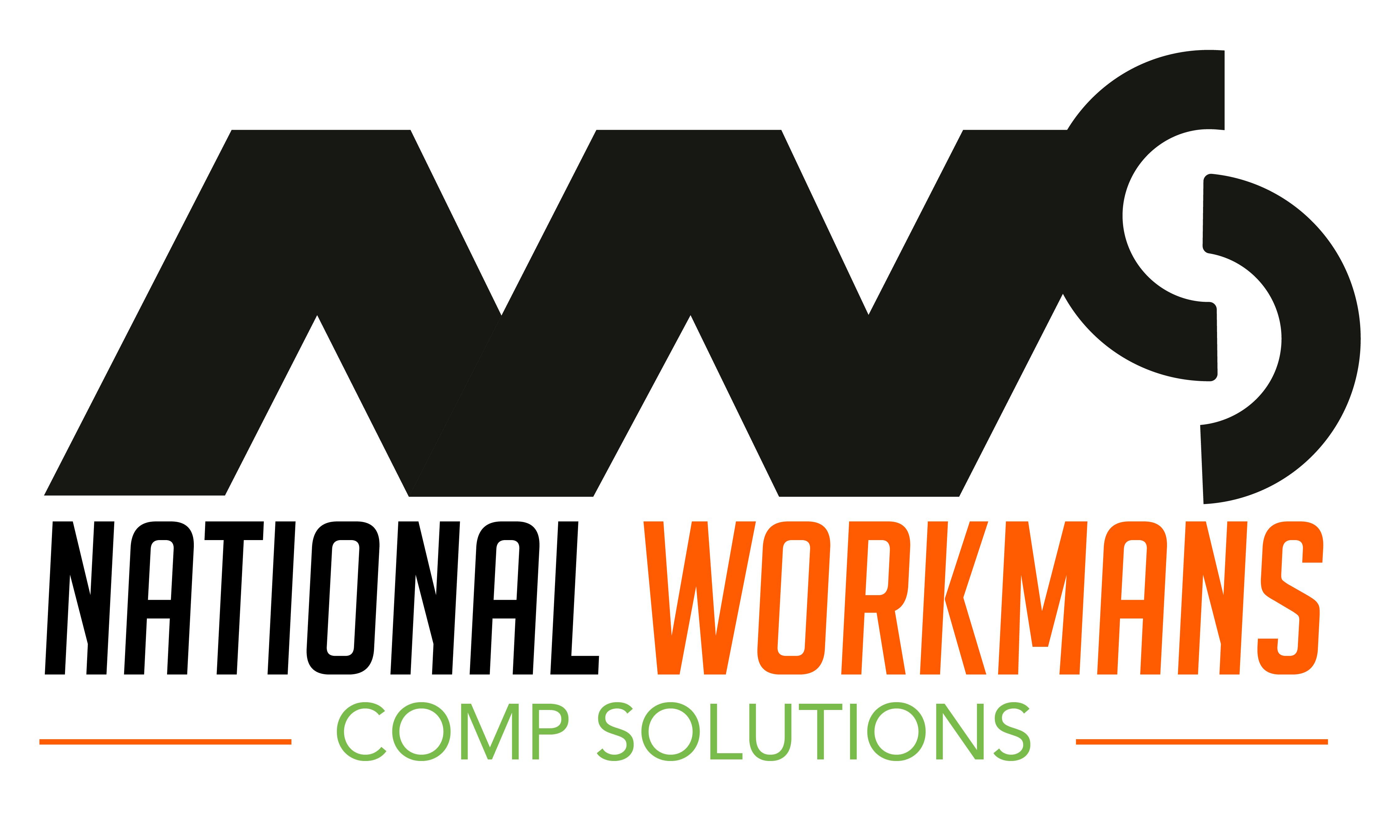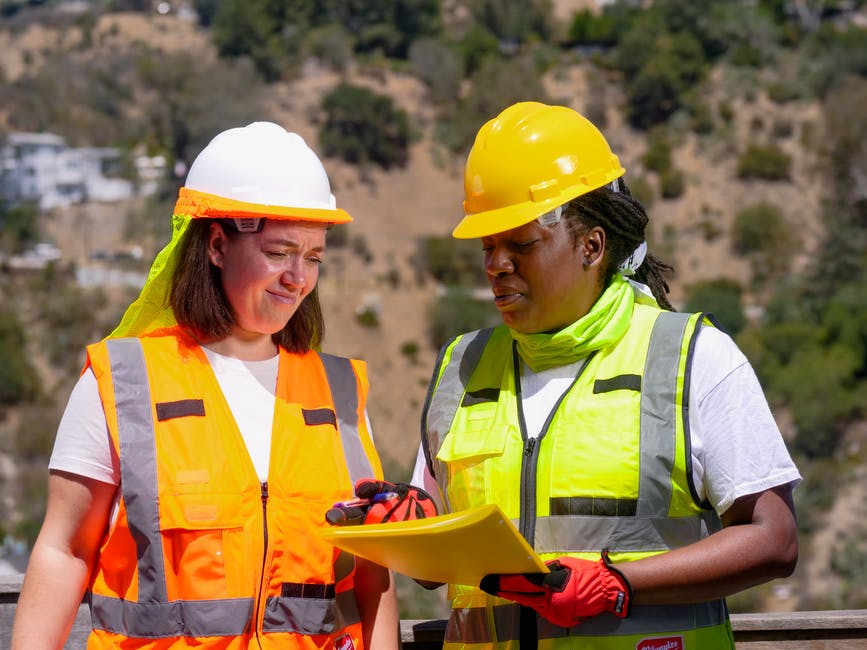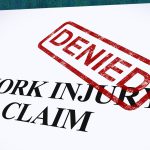There are workplace hazards in any workplace setting. While some jobs are more hazardous than others, all workers are at risk.
There are roughly 2.8 million nonfatal work-related injuries reported in America each year. In some cases, workplace injuries even result in death.
Workers’ compensation’s required for most businesses in the country. Workers’ compensation insurance ensures workers have coverage in the event of a workplace injury.
This guide will look at some of the workplace hazards that workers’ compensation can cover.
What Is Workers’ Compensation?
But first, what is workers’ compensation exactly?
Workers’ compensation protects employees. It helps cover the costs associated with work-related injuries.
The insurance helps cover lost wages and medical expenses. It covers the cost of ongoing care. In extreme cases, workers’ compensation will even help pay for a funeral.
Workers’ compensation covers most workplace incidents. But it will not cover an intentional situation. Incidents involving an intoxicated worker are also not covered.
Here are some of the workplace incidents it will cover.
Falls, Slips, and Trips
Some of the most common workplace injuries are falls, slips, and trips. While these injuries are often minor, they can also result in serious injuries.
Bone fractures and contusions are often the results of these types of accidents. Contusions are bruises that appear after a bump or following a fall. Fractures can take a long time to heal and require time off work or modified work, and therefore a loss in workplace productivity or wages.
Here are some of the hazards in the workplace that can lead to such incidents. Eliminating these hazards in the workplace helps to prevent such injuries.
Trips
Trips are typically caused by objects obstructing a walking area. Those objects include general clutter, a rolled-up rug, and loose cables.
Poorly kept stairwells and uneven surfaces are also tripping hazards. These common injuries are easily avoided by keeping high-traffic pathways clear and making sure facilities are well maintained.
It is important to make sure your workplace is tidy and organized. You should also make sure an area is well-lit to reduce the risk of tripping.
Slips & Falls
Slips occur when spills or wet and oily surfaces impact traction and make a surface slippery.
Bad weather conditions can also increase the risk of slips and falls. This is particularly true if an area is covered icy. It is crucial to use salt to make surfaces safer for walking.
What’s Covered?
Workplace injuries caused by trips, slips, and falls are very common. But many workers fail to file claims in these situations.
Some feel embarrassed by the incident and choose to brush it off. Others worry they are at fault, even though the incident was an accident.
Workers’ compensation helps protect employees. If you slip or trip at work and injure yourself, it is important to make a claim. Workers’ compensation will cover the costs of medical care so you don’t have to.
Overexertion of the Body
Injuries associated with overexerting the body account for some of the most common workplace injuries. Strains, sprains, back injuries, and repetitive strain or stress (RSIs) are often caused by heavy lifting or repetitive motion.
While these injuries may not seem serious, healing can require a lot of time and medical attention.
Here are some of the common conditions caused by overexertion of the body, and how to avoid them.
Sprains
Sprains are the result of overstretched ligaments. These injuries often occur at work because of excessive pushing, or heavy lifting.
Sprains also occur because of bad posture when lifting large items. Lifting heavy items overhead can also result in sprains.
To avoid this, workers should stretch before their shifts, use their knees to lift and never lift more weight than they can physically handle.
Strains
Strains occur when muscles tear or stretch.
These injuries are frequently caused by repetitive motion. When it comes to workers’ compensation, high-risk jobs for strains include factory jobs or work on a production line.
In some cases, strains are also caused by overexertion or bad slips, trips, and falls.
Avoid strains by taking frequent breaks, switching hands often, and stretching before a shift.
Back Pain
When we think about back pain at work, we often think of injuries caused by heavy lifting. While this is a common occurrence, it is not the only source of work-related back pain.
Back pain can also be a result of repetitive motion or bad posture. Even something as simple as sitting hunched over at your desk for too long can cause back pain.
It is important to be mindful of healthy posture and wear comfortable shoes. If you sit at a desk, make sure you have a supportive chair and take frequent breaks away from your desk.
Carpal Tunnel
Carpal Tunnel Syndrome is a condition caused by repetitive motion. Those with repetitive tasks that require the wrist to work are more inclined to result in Carpal Tunnel.
Carpal Tunnel Syndrome is the inflammation of the Carpal Tunnel area between the hand and the arm. The condition can cause numbness, tingling, and weakness.
This can be avoided by taking frequent breaks, changing your posture, stretching your hands, and wearing a brace.
Tendonitis
Tendonitis is the inflammation of a tendon. This condition can be quite painful if it’s not looked after. It can also prove to be a major distraction at work.
This condition often comes on suddenly, often as the result of a strain or overexertion of the tendon.
It is difficult to avoid this common injury because it can happen quickly and unexpectedly. But if you experience tendonitis, it’s best to have it treated immediately. This condition typically requires rest to heal.
What’s Covered?
When it comes to overexertion of the body, most incidents are covered.
Depending on the injury, employees may require time off to heal. Or they may have modified work. This often results in lost wages.
Employees may require ongoing care or physiotherapy. They may also have additional medical bills for items like braces.
Workers’ compensation will cover and offset these costs.
Contact with Objects
Employees may come in contact with sharp objects in the workplace. These incidents often result in cuts and lacerations.
These injuries must be documented and treated immediately as they can lead to further complications like infection, disfigurement, and even amputation. Inform your supervisor and make sure your wound is cared for.
Here are some of the common causes of these injuries and how to avoid them.
Cuts
Cuts are the result of a sharp object making contact with the skin.
While these injuries vary in severity, they can cause serious complications. You can lose a lot of blood, or risk infection.
Lacerations
Lacerations are often the result of blunt trauma. Lacerations are classified in different ways and include puncture wounds.
Similar to a cut, these injuries occur when an object makes contact with the skin.
Cuts and lacerations can be avoided by making sure workers are using the appropriate tools and that the tools are sharpened. Take care to ensure all equipment is in good condition and safeguards are properly placed.
Employees should receive proper training before using any hazardous equipment. They should also have appropriate personal protective equipment (PPE), including hand protection, goggles, reflective wear, steel-toe boots, and hard hats. Workplaces should encourage employees to take their time, and respect the equipment they are using.
What’s Covered?
Workers who suffer a cut or laceration at work may be eligible for workers’ compensation. That’s why it is crucial to report even the most minor cuts to your employer as soon as they occur.
Workers’ compensation will cover any associated medical expenses. They will also help cover lost wages in the days following your injury.
Special benefits are also offered in rare cases where a cut or laceration results in dramatic permanent scarring.
Harmful Substances
In some cases, employees get exposed to toxic or harmful substances in the workplace. Exposure to these environments may result in illnesses.
Employees may also experience increased asthma or reactions to allergens in the work environment.
Workplaces must ensure employees have access to the appropriate PPE to avoid such exposure. This includes masks, eyewear, and safety gloves.
Employees should also train on how to safely store and dispose of harmful chemicals.
What’s Covered?
If an employee has been exposed to harmful substances, they are entitled to workers’ compensation. If you suspect you have fallen ill as a result of your workplace, seek medical attention immediately.
Workers’ compensation will cover the costs of any associated medical treatment. It will also cover the costs of any time you need to take off as a result of your illness.
Transportation Incidents
More than 54,000 non-fatal work-related transportation incidents required American workers to take time off in 2020. Transportation incidents are another leading cause of work-related injuries.
Several types of accidents can occur as a result of transportation incidents. These include being involved in a collision, being struck by a vehicle, falling from a vehicle, and being crushed or stuck between or under vehicles. These incidents can be non-fatal or fatal.
These incidents can result in, but are not limited to the following injuries and conditions:
- Cuts and Lacerations
- Strains
- Nerve Damage
- Broken Bones
- Internal Bleeding
- Back Pain
- Traumatic Brain Injuries
- Mental Trauma
- Paralysis
- Death
Work-related transportation incidents can be avoided by driving defensively and following the rules of the road. Make sure you are not in the path of an oncoming work vehicle. And ensure all employees take proper safety measures around vehicles, including wearing seatbelts or being properly secured to any vehicles that pose a risk of falls.
What’s Covered?
Workers’ compensation is a no-fault insurance system. It is important to remember that even if you were the driver at fault, you likely qualify for workers’ compensation.
This is the case if your transportation incident took place during work hours, and as a result of work purposes. Workers’ compensation does not cover incidents that took place on your drive to and from work.
Most conditions caused by a work-related transportation incident are covered by workers’ compensation. If you endured mental stress as a result of the incident, that may have coverage as well.
If you have been in an accident at work, maintain a log of how your injuries are impacting your ability to do your job. You should also hang on to receipts for any medical expenses. Workers’ compensation will also cover any lost wages.
Electrocution
Incidents of electrocution are common in the workplace as well. Such incidents are often serious and can cause injury.
Even the smallest amount of electric shock can leave visible burns, or damage the inside of the body. Injury can lead to cardiac arrest and in some cases, it can even be fatal.
Workplaces and employees can avoid electrocution incidents by practicing responsible care with power sources. Ensure safety gear is not faulty, and wires get inspected regularly.
Avoid contact with overhead power and do not overload or misuse extension cords.
What’s Covered?
If you endured an injury as a result of electrocution in the workplace, make sure you report it immediately. There are deadlines in such cases to receive workers’ compensation.
Workers’ compensation will cover any reasonable medical expenses including skin grafts, hospital stays, and ongoing care. It will also cover lost wages and help provide vocational expenses should you need to look for a new job.
If you have lost a loved one to electrocution in the workplace, workers’ compensation can provide compensation for your family. It can also assist with funeral costs.
Fires & Explosions
While it may sound extreme, fires and explosions do occur in the workplace, and employees must take the proper measures to avoid them.
Fires and explosions can cause serious injuries including severe burns, lung damage from smoke inhalation, cuts and lacerations from blasts or flying objects, and even death.
For a fire or explosion to occur, there often needs to be a presence of heat, oxygen, and fuel. If your workplace has all the ingredients for this fire triangle, you may be at risk of a fire or explosion.
Fires and explosions at work are caused by flammable and combustible materials, faulty electrical systems, hot work (including welding), cooking equipment, untidy workplaces, and human error.
Workplaces need to practice regular fire drills and maintain working fire alarms and sprinkler systems. Safely store combustible and flammable materials. Make sure employees keep the area tidy.
What’s Covered?
Fires and explosions are rare, but they are also one of the leading causes of work-related casualties. If you or someone you love is a victim of a workplace fire or explosion, you are eligible for workers’ compensation.
Workers’ compensation will cover any existing or future medical costs. You may also be entitled to disability benefits. It will also cover lost wages and vocational training if you are now out of a job.
If you have lost a loved one as a result of a fire or explosion, workers’ compensation offers benefits for surviving family members as well as coverage towards funeral costs.
Violence or Injuries Caused by a Person
One of the more complicated incidents that can occur in the workplace is violence deliberately caused by another person.
Incidents such as physical assault can cause bodily harm. But workplace violence is not always physical. Sometimes it is psychological, through means of harassment and intimidation.
Workplaces can avoid such situations by running background checks on incoming employees, and installing proper security to prevent confrontation in the workplace. Encouraging a positive and healthy work culture also helps to eliminate such occurrences.
If you have been a victim of violence in the workplace, here’s what you need to know.
What’s Covered?
While workers’ compensation does not cover workplace disputes, it will protect workers who did not initiate the violence perpetrated against them. For example, if you work in a hospital and were attacked by a patient, you were simply doing your job. In such a case, you are entitled to workers’ compensation.
Workers’ compensation does not cover domestic violence that occurs in the workplace or personal disputes between employees. Workers who file a claim for workers’ compensation because of workplace violence will need to prove the incident took place unexpectedly and was not at all initiated by them.
It is also important to note that your employer could be liable for damages if they did not take the appropriate steps to prevent the violence that occurred. For example, if they hired another employee with a history of violence, or failed to take proper security measures.
If successful, workers’ compensation will cover the cost of any physical or mental damages endured as a result of the incident at work.
Eliminating Workplace Hazards
Workers’ compensation is no-fault insurance. For that reason, the majority of workers involved in workplace incidents are eligible to receive workers’ compensation.
But it’s best to take precautions to avoid accidents from taking place at work in the first place. Here are a few tips employers can take to eliminate hazards in the workplace and ensure a safer work environment.
- Secure Tools & Equipment
- Apply Safeguards to Sharp Equipment
- Limit Access to Work Areas for Essential Employees
- Provide Proper Training
- Inspect Machinery Regularly
- Keep the Area Tidy
- Keep a Maintenance Log
- Safely Dispose of Toxic Chemicals
- Store Flammable and Combustible Materials Off-Site
- Install Security Systems
- Test Smoke Detectors & Hold Fire Drills
- Enforce Proper PPE
- Stretch
- Offer Regular Breaks
- Encourage Employees to Report Hazards
- Designate a Health & Safety Representative
Incidents That Are Not Covered
While most workplace incidents are covered, there are exceptions. Workers’ compensation is no-fault insurance but it does not cover situations that involve malice or intent.
It is also available specifically for incidents that occur in the workplace, and sometimes that can cause confusion. This is particularly true if someone is working off the clock, or is involved in a workplace incident outside the actual workplace during or around work hours.
Here are some common occurrences that are not covered by workers’ compensation.
- Self-Inflicted Injury
- Unlawful Activities
- An Incident That Did Not Take Place During Working Hours
- Domestic Abuse
- Intentional Violence Between Two Individuals
- Disregard or Neglect of Safety Training or Safety Policy
- Intoxicated Individuals
Workers Who Are Not Covered
While the majority of workers in America are eligible for workers’ compensation in the case of a workplace incident, there are exceptions.
Some professions are exempt from workers’ compensation because they are self-employed and do not qualify as workers. Other professions get excluded from workers’ compensation because they are eligible for other benefits, including federal packages.
While the majority of volunteers are not eligible because they are not classified as workers, some workplaces have made exceptions. If you are volunteering, it is important to ask if you are eligible for workers’ compensation.
Depending on the laws of individual states, the following workers may not be eligible, regardless of the workplace incident that has occurred.
- Undocumented Workers
- Independent Contractors
- Business Owners
- Volunteers
- Domestic Workers
- Seasonal Employees
- Federal Employees
- Railroad Employees
- Agricultural Workers
Workers’ Compensation Has You Covered
No one wants to endure an injury as a result of a workplace incident. But each workplace comes with unique risks and workplace hazards. The reality is, workplace injuries are common, and it is important to prepare in case you have one.
By understanding the various workplace incidents covered by workers’ compensation, you can ensure you seek the appropriate benefits if you have an accident at work.
If you are a contractor or employer looking for workers’ compensation for your business, we can help. Contact our team today and let’s get started.


 December 10, 2022
December 10, 2022 Blog
Blog 









